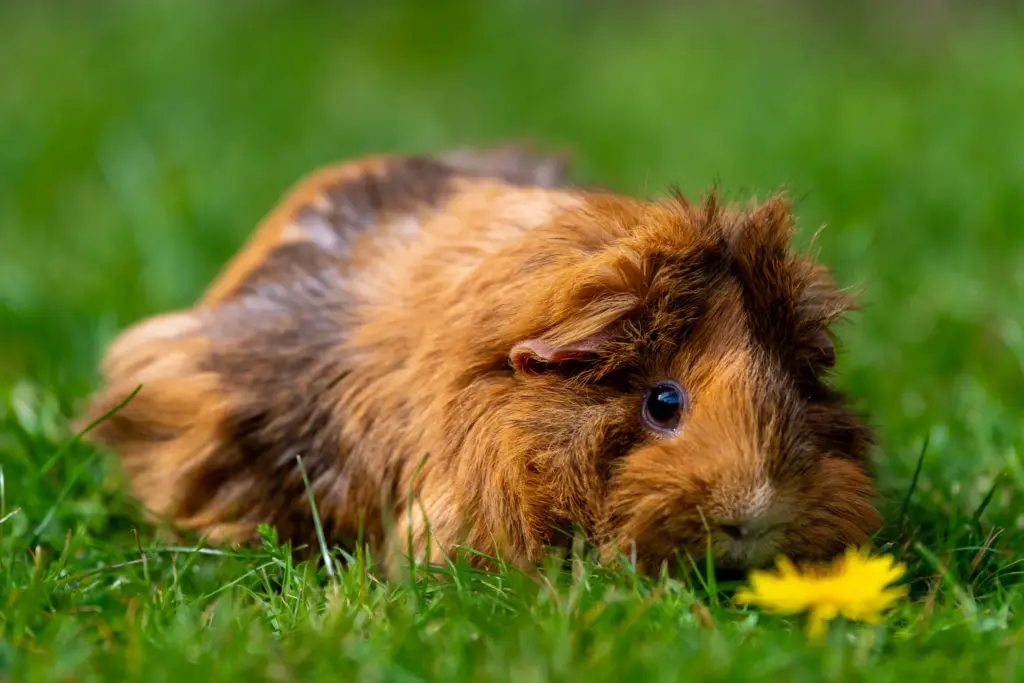Pet photography is a delightful way to capture the personalities and nuances of our furry companions. Recently, I stepped outside my usual focus on wildlife and landscape photography to try something a little different. I had the pleasure of photographing a guinea pig named Chesnut in a serene outdoor setting, creating a tranquil yet striking image that showcases the magic of natural pet photography. For this particular session, my goal was to highlight the guinea pig’s unique fur tones against the lush greenery of the grass, with a touch of added depth from a vibrant yellow dandelion. Below, I’ll walk you through the session’s details, focusing on the technical choices, creative vision, and practical tips for getting stellar results when photographing pets.

Setting the Scene
The session took place on a sunny, slightly overcast day. The decision to shoot outdoors was intentional, as natural light offers a beautifully diffused quality that enhances both the subject’s features and the surrounding environment. To compose the shot, we selected a grassy area flush with vibrant, healthy greenery. This kind of setting not only provided a visually interesting texture but also contrasted beautifully with the guinea pig’s warm brown and orange fur. The addition of the small yellow dandelion in the frame was a spontaneous creative choice. Placing it near the guinea pig’s head added a splash of color and helped guide the viewer’s eye toward the subject.
Technical Details
Here’s a breakdown of the camera settings and equipment used:
- Camera and Lens: I opted to use a Nikon D850 and a Nikkor 70-200mm 2.8f zoom lens for this shoot. The camera has a great dynamic range, and the lens is known for its ability to produce sharp details and a lovely shallow depth of field. This lens works well for small subjects like guinea pigs, as it allows for close-up shots without distortion.
- Settings:
- Aperture: f/2.8. This wide aperture separated the subject from the background, creating a soft bokeh effect in the grass while keeping the guinea pig sharply in focus.
- Shutter Speed: 1/1000. Since guinea pigs can be quite active, a fast shutter speed was used to freeze any potential movement.
- ISO: 64. This balanced out the available natural light, keeping noise levels low while preserving the image’s rich colors.
- Lighting: I worked with natural light, letting the diffuse overcast sky act as a giant softbox. This even lighting eliminated harsh shadows and complemented the guinea pig’s multi-toned fur.
Composition
The key to this image’s composition was placing the guinea pig centrally, creating an immediate focal point. I adhered loosely to the rule of thirds by aligning the flower near the bottom right of the frame. This positioning not only balanced the composition but also added a touch of whimsy and warmth. Shooting from a ground-level perspective helped immerse the viewer in the guinea pig’s world, making it feel intimate and engaging.
The Process
Working with small pets like guinea pigs requires patience and a gentle approach. To keep the guinea pig comfortable and engaged, we allowed her to settle naturally on the grass before I began shooting. Movement was minimal, and I used quiet shutter release settings to avoid startling it. Treats were strategically placed off-camera to hold its attention, but careful timing was essential to capture moments when the guinea pig gazed naturally or assumed a relaxed pose.
The Importance of Details
One of the standout features of this image is the rich texture and layering of details. The guinea pig’s fur, with its interwoven shades of orange and brown, pops against the natural tones of green grass. By selecting a sharp focus point on the guinea pig’s visible eye, I ensured the subject felt dynamic and alive. The slightly tucked ear and rounded contours of its body gave the composition a soft, tranquil quality.
Tips for Pet Photography Enthusiasts
If you’re looking to capture similar shots, here are a few pointers:
- Choose the Right Time of Day: Early mornings or late afternoons provide the best natural light, minimizing harsh shadows and maximizing warmth.
- Shoot from Eye Level: Lowering your camera to the pet’s viewpoint creates an intimate connection between the subject and viewer.
- Create a Comfortable Environment: Allow the animal to explore and relax in its surroundings before you start photographing.
- Experiment with Angles and Props: Unique perspectives, paired with small elements like flowers or leaves, can add creativity to your images.
- Focus on the Eyes: Sharp eyes can make or break a portrait. It’s the detail that draws viewers in and gives the photo life.
Final Thoughts
Pet photography is as much about storytelling as it is about technique. This session with the guinea pig brought together careful planning, technical expertise, and a touch of spontaneity to create a calm yet vibrant portrait. From the soft blur of the background to the radiant contrast of the guinea pig’s fur, every element was thoughtfully considered to produce a visually cohesive image.
If you’re inspired to photograph your own pets, remember to enjoy the process. Whether it’s a moment of playful energy or quiet stillness, your photos are opportunities to celebrate the bond you have with your animals and the beauty they bring into our lives.

